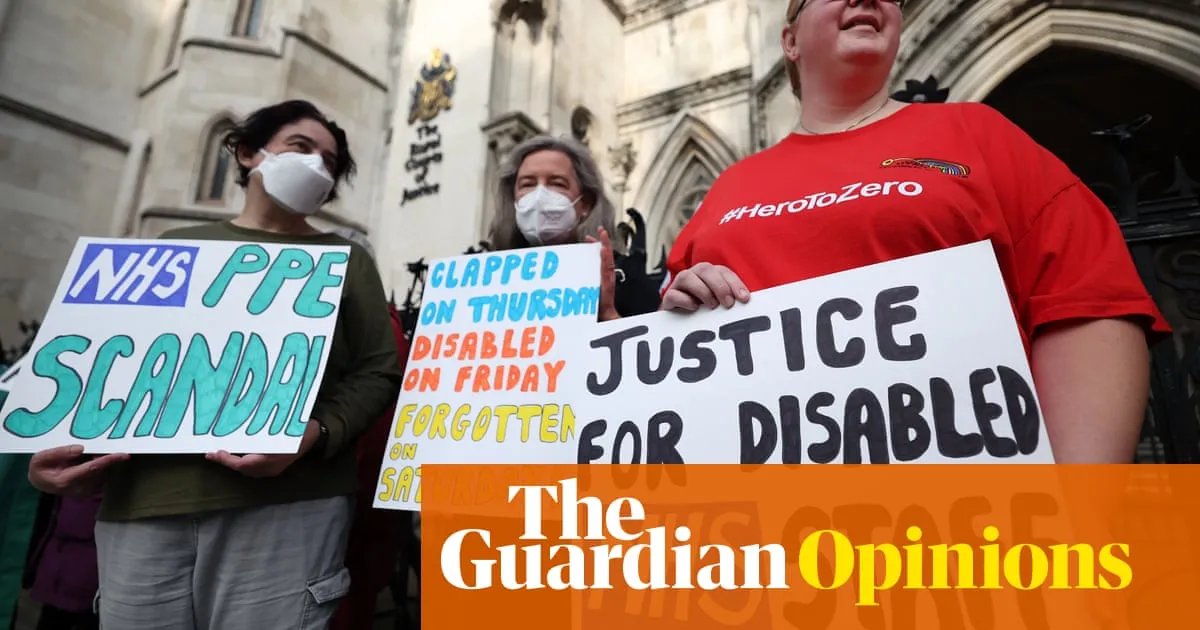
Imagine a disease that can leave its sufferers bedbound for years, robbing them of their ability to perform simple tasks. Picture a once-active marathon runner now unable to walk to the toilet. In England and Scotland alone, at least 2 million people are grappling with this debilitating illness, suffering from a range of symptoms that include breathlessness, brain fog, and multi-organ damage. Unfortunately, there are no proven treatments or cures for this life-altering condition, and patients are often dismissed with the notion that it’s all in their heads.
As the world moves on from the initial impact of the coronavirus pandemic, more individuals are falling ill every day due to the virus that triggers this devastating disability. Successive governments have seemingly abandoned nearly all strategies to address the issue. This isn’t a nightmare conjured from imagination; it is the stark reality of long Covid, which remains a public health crisis that few wish to discuss.
Five years after the first coronavirus lockdown, long Covid stands as a shadow of the pandemic. While the era of daily death toll updates is thankfully behind us, many individuals continue to suffer from chronic symptoms long after their initial infection. You might think that long Covid has faded into the background of public discourse, overshadowed by discussions of post-pandemic recovery, yet it persists as a significant challenge.
When was the last time you heard a politician mention “long Covid”? Or witnessed calls for research and support for those affected make the headlines? In 2025, long Covid is a pressing issue that remains largely ignored, inflicting severe damage to lives, the economy, and the health service, as those in power pretend it’s not a significant concern.
Back in 2020, Boris Johnson’s government made headlines by promising that long Covid patients would receive specialized help at dedicated clinics, backed by an additional £10 million in local NHS funding. Fast forward five years, and there are now over 90 adult post-Covid services across England aimed at diagnosing and rehabilitating individuals with long-term symptoms. However, data indicates that only a fraction of those with long Covid have accessed these services, with many waiting over three months for assessment following a GP referral.
In recent months, long Covid clinics across the UK have begun to close their doors, with NHS Cheshire and Merseyside being the latest to face financial viability issues. As a result, some patients are resorting to expensive and unproven treatments, draining their life savings in search of relief.
The situation is equally bleak when it comes to accessing disability benefits. A 2021 study published in the Lancet revealed that 22% of respondents with long Covid were unable to work, while 45% were working reduced hours. Yet, when media outlets cover the increasing number of individuals unable to work due to long-term illness, coronavirus is rarely mentioned. Instead, the focus is often on the “soaring welfare bill” and proposals to cut disability benefits further.
Even those with long Covid who manage to retain their jobs face challenges from the benefits system. In 2023, only 5,224 claimants listed long Covid as their primary disabling condition, a minuscule figure compared to the actual number of affected individuals. Disturbingly, reports indicate that doctors and nurses who developed long Covid while serving on the frontlines during the pandemic are now being denied disability benefits, reflecting a profound lack of support for those in dire need.
Children are not spared from this crisis. In 2024, more than 110,000 minors aged three to 17 in England and Scotland were estimated to suffer from long Covid, with over 20,000 of these children severely affected. At a stage in their lives when they should be playing and enjoying carefree moments, many are confined to their beds. The topic of coronavirus rarely surfaces in discussions about school absences, leading to threats of legal action against parents for their children’s truancy due to long Covid.
Beyond the human cost, the financial implications for the UK are staggering. One study estimated that long Covid has resulted in at least £5.7 billion in lost productivity from 2022 to 2023, with some economists predicting that the annual healthcare costs could reach £4.2 billion by 2030.
Given these alarming statistics, one might expect government officials to prioritize measures to curb the spread of coronavirus. After all, preventing infection is the most effective and cost-efficient approach to mitigating long Covid. However, in 2022, the last official Covid protections were dismantled, including the cessation of most free testing. By 2024, access to vaccines was severely restricted, offered only to a small segment of the population. This is despite evidence suggesting that individuals who are fully vaccinated and up-to-date with their boosters experience a significantly lower risk of developing long Covid.
This decision has led to two critical consequences: it has normalized the cycle of repeated Covid infections and consequently increased the risk of long-term health complications. As pandemic restrictions were lifted, many anticipated a “return to normal.” Unfortunately, the millions of individuals suffering from long Covid have not been afforded that privilege. While some recover over time, the most severely affected remain trapped in a perpetual lockdown, unable to engage in social activities or resume their careers.
As you read this article, more people are likely falling ill, experiencing a relentless cycle of exhaustion and pain. If you or someone you love becomes one of them, you will undoubtedly wish for the support that is sadly lacking. The reality for long Covid sufferers is not merely a shadow of the pandemic but a stark reminder of the ongoing public health crisis that demands our urgent attention.
— Frances Ryan, Guardian Columnist